#creamy green chile sauce
Explore tagged Tumblr posts
Text
Latin American - Chicken Enchiladas with Creamy Green Chile Sauce

Corn tortillas stuffed with chicken and cheese and baked in a sauce flavored with hot green chiles. Adapt the quantity of chopped chiles to your preferences!
0 notes
Photo

Chicken Enchiladas with Creamy Green Chile Sauce Corn tortillas stuffed with chicken and cheese and baked in a sauce flavored with hot green chiles. Adapt the quantity of chopped chiles to your preferences!
0 notes
Text

Chiles en nogada or stuffed poblano chiles in walnut sauce is a star dish of the Mexican Independence Day, celebrated every year on September 16. Poblano chiles are large, heart-shaped peppers with thick walls, great for stuffing, and characterized by their flavors which can range from mild to hot.
The dish was invented in 1821 by nuns from the city of Puebla who wanted to make a meal using local ingredients that were in season, as a symbol of appreciation for the Mexican General Augustin de Iturbide. It consists of a mixture of ground pork meat and dried fruits, stuffed in poblano chiles that are covered with a creamy walnut sauce and decorated with parsley and pomegranate seeds on top.
The dish is available only during that short season of the year, specifically in September, when the chiles are the greenest, the pomegranates ripe and red, and the walnuts just picked from the trees. Chiles en nogada boasts its unusual ingredients for a reason - they represent the colors of the Mexican flag - white, red and green, making the dish as patriotic as it can be.
When consumed, the dish releases intense aromas of cinnamon, apple, pear, walnuts, and almonds, contrasted with the strong flavors of pork, garlic and onion, complementing each other in this delicious, festive dish.
src.: https://www.tasteatlas.com/chiles-en-nogada
10 notes
·
View notes
Text

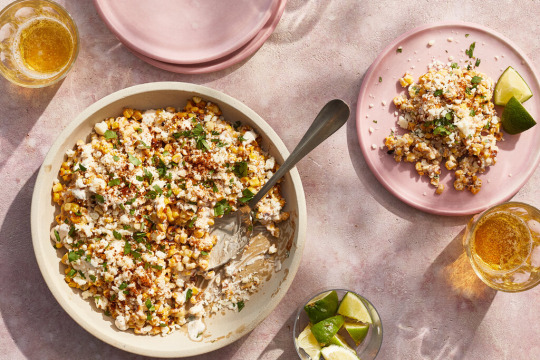
Exquisite esquites
By Mia Leimkuhler
If I were mayor of Picnictown, every picnic would have the following: a blanket, a 1:1 dog-to-human ratio and esquites. The blanket’s there because grass is itchy no matter what the most outdoorsy person in the group says; the dogs because dogs are great. The esquites are essential because my favorite outdoor corn is elotes, but they don’t travel nearly as well as esquites. (The laws of Picnictown consider how easy it is to carry your picnic things on public transportation.)
This is barely a compromise, though, because Kay Chun’s esquites capture all the beloved and balanced elements of elotes: sweet summer corn, tangy lime, creamy cotija (and crema), spicy ancho chile. The smoky flavor you get from grilled corn is here, too, as the kernels are charred in a hot skillet until browned and caramelized. Perhaps the most enticing part of the recipe is this note from Kay: “Leftovers transform quickly into a great pasta salad the next day; simply toss with cooked pasta and olive oil.” Picnictown loves a resourceful pasta salad.
More picnic decrees, because it’s the first day of summer! Make Zainab Shah’s sheet-pan chicken tikka thighs ahead of time, and then toss some roti or naan in your tote bag for effortless but extremely delicious sandwiches. Ali Slagle’s green bean salad with dill pickles and feta is perfect all by itself, but if someone else wanted to bring a container of cooked barley or farro, that would be a really nice collaborative grain bowl picnic moment. (For even more lovely, easy picnic ideas that travel well, check out this recipe collection.)
Every June, the summer produce flows into and overwhelms my corner grocery store, and every June I am positively giddy about it. Right now the shelves are buckling from so many cherry tomatoes, and I’m doing my part with salad e-shirazi, basil and tomato fried rice and salmon and tomatoes in foil, a five-star, five-ingredient dinner from Mark Bittman.
I am trying to be more adventurous with my vegetables, branching out and bringing home goodies I don’t usually cook. I’ve never really loved bitter melon (I’m not alone), but I do like bitter things — extra dark chocolate, dandelion greens, Campari. So I’m going to try this stir-fried bitter melon with eggs, a recipe from Chutatip Suntaranon (known as Nok) adapted by Cathy Erway.
The creamy scrambled eggs, salty soy sauce and molasses-y brown sugar will mellow out the harshest edges of the bitter melon. And I trust Nok — I’ve had the pleasure of dining at Kalaya, Nok’s restaurant in Philadelphia, and Nok never misses.
Lastly: It’s hot out there, and I’d like to give you an excuse to stand in front of the open refrigerator after a long afternoon in Picnictown. Here’s Lisa Donovan’s new recipe for buttermilk tres leches cake, which is best served extremely chilled, straight from the pan. I interpret this as spooning giant mouthfuls of cold, creamy cake into my mouth while bending into the fridge, but if you’d like to use plates and forks and a table, by all means.
IN THIS NEWSLETTER
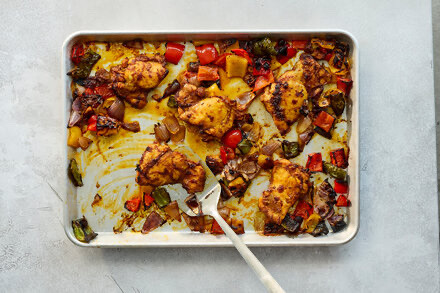


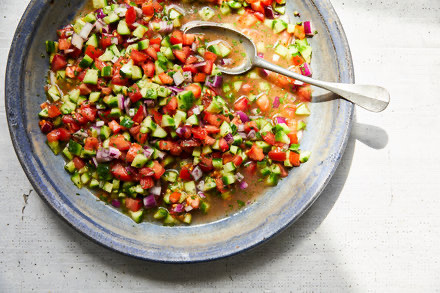



Sign up for The Veggie newsletter
Tanya Sichynsky shares the most delicious vegetarian recipes for weeknight cooking, packed lunches and dinner parties.

#the new york times #cooking
#mia leimkuhler #picnic #kay chun
#make zainab #matk bityman
#cathy erway #nok #lisa donovan
#sheer-pan chicken tikka thinghs
#basil and tomato fried rice
#salmon and tomatoes on foil
#butyermilk tres leches cake
#recipe’s #the veggie newsletter
#tania shichynsky #dinner parties
#packed lunches #food
#original food #xpuigc #pucex
#olaf peterson #de tot
#the new york times#cooking#mia leimkuhler#picnic#kay chun#make zainab#matk bittman#cathy erway#nok#lisa donovan#sheet-pan chicken tikka thinghs#basil and tomato fried rice#salmon and tomatoes on foil#butyermilk tres leches cake#recipe’s#the veggie newsletter#tanya shichynsky#dinner parties#packed lunches#food#original food#xpuigc#pucex#olaf peterson#de tot
10 notes
·
View notes
Text
dishes i made in 2024 (๑ᵔ⤙ᵔ๑) !
☆= top 15
pork & asparagus stir fry steak & spring veggies w mustard sauce grilled burgers w harissa aioli miso peanut butter sesame cookies gochujang sesame soba noodles black rice congee w tahini sauce & cured egg yolk preserved lemon tea cake ☆ buckwheat chocolate chip cookies green ribollita maple harissa salmon w whipped feta & roasted grapes ☆ sake & soy braised pork belly ☆ tequila ancho pasta green pea & asparagus risotto lemon basil madeleines dried tomato chicken ramen broccoli steak, whipped beans, chimichurri salted banana cookies spicy tuna onigirazu ☆ blackberry cobbler ice cream black sesame rice krispies crispy gochujang ranch chicken thighs ☆ pulled pork sandwiches & mango slaw walnut cauliflower tacos caramelized lemon leek couscous salad ☆ shishito pepper salad w sizzled mint + sesame ☆ lox & lemon cashew cream cheese toast courgette, prosciutto, burrata sandwich sweet corn cacio e pepe caramelized onion pasta bake crispy halloumi & tzatziki rice bowl fresh-squeezed mango lavender lemonade kimchi pepper jack grilled cheese chocolate almond flour cake ☆ flounder risotto red chimichurri, roasted chicken, lemon rice lemon chive buerre blanc salmon, herbed orzo, broccolini orange miso black rice salad panqué de elote marinated chipotle wings, creamed corn smashed gnocchi salad tomato risotto enchiladas verdes black sesame karaage ☆ kabocha, chorizo, creamy chickpea butternut squash spelt cake w chocolate ganache chorizo & spaghetti squash hash ginger miso carrot soup harissa gruyere gratin green curry cod ☆ orzo puttanesca ☆ gâteau Suzy crispy lime cabbage & turmeric white bean mash salted sticky toffee pudding pumpkin pie applejack sour ☆ maple gochujang brussel sprouts ☆ japanese milk bread buns pozole rojo ☆ hot honey madeleines red chile jackfruit tamales ☆ arroz verde
5 notes
·
View notes
Text



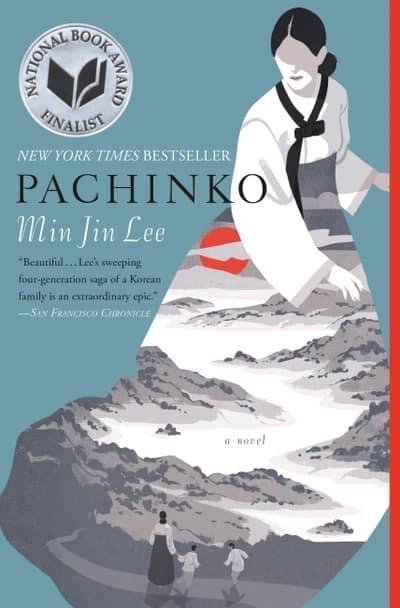


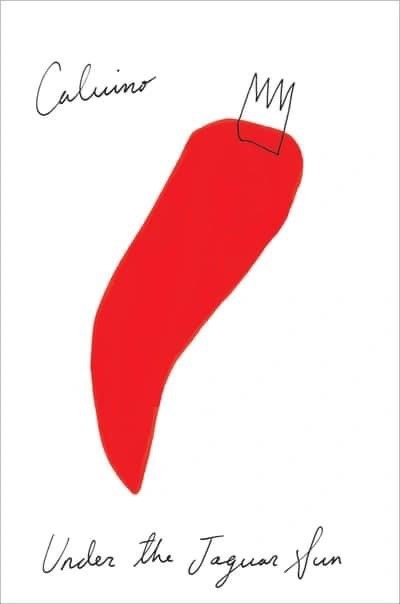



THE 12 MOST UNFORGETTABLE DESCRIPTIONS OF FOOD IN LITERATURE
Haruki Murakami’s stir fry, Maurice Sendak’s chicken soup with rice—only the most gifted writers have made meals on the page worth remembering.
By Adrienne LaFrance for The Atlantic
In literature, references to eating tend to be either symbolic or utilitarian. Food can indicate status or milieu (think about all those references to Dorsia in American Psycho), or it can move the plot forward (Rabbit Angstrom’s peanut-brittle habit in John Updike’s final Rabbit book). Even in the hands of the greats, food scenes can seem less than central to a story, more filler or filigree than substance. There are exceptions, however—moments in which food unlocks a higher story form. Here are 12 of my favorites.
>>>>>
In addition to having one of the best opening lines of any novel ever, “The Wind-Up Bird Chronicle”contains some of the most memorable meals in all of literature. In a novel that is all surreality, darkness, and rabbit holes, Murakami’s simple descriptions of sustenance have an almost metronomic quality—the only thing anchoring the story to reality as it slips away from its main character, Toru—while setting the tempo for a strange, unfolding mystery:
“At noon I had lunch and went to the supermarket. There I bought food for dinner and, from a sale table, bought detergent, tissues, and toilet paper. At home again, I made preparations for dinner and lay down on the sofa with a book, waiting for Kumiko to come home … Not that I had any great feast in mind: I would be stir frying thin slices of beef, onions, green peppers, and bean sprouts with a little salt, pepper, soy sauce, and a splash of beer—a recipe from my single days. The rice was done, the miso soup was warm, and the vegetables were all sliced and arranged in separate piles in a large dish, ready for the wok.”
Such scenes show up repeatedly in Murakami’s work. Every time, the effect is somehow both mouthwatering and unnerving. Note the simplicity of the menu, the methodical preparation, the sense of time and of waiting. Murakami’s descriptions of food do exactly what his novels do best—they take the mundane and make it somehow magical, take the real and warp it into a dream.
+
“Under the Jaguar Sun,” by Italo Calvino
Calvino’s particular skill is his dreamer’s eye, his ability to make stories of incredible lightness out of a too-complicated world. In “Under the Jaguar Sun,” a collection of three short stories that engage the senses, he describes the act of cooking as “the handing down of an intricate, precise lore.” Each dish can be a kind of story that reflects the person who eats it—one that attaches a meal to the ancestral. (Anyone who has tried to interpret her Italian grandmother’s handwritten recipes will see the humor and the profundity in this kind of bequeathed knowledge.) Calvino writes, too, of food’s unique ability to capture a moment in time. In one scene, he describes a couple sharing a meal in an orange grove in Tepotzotlán, Mexico:
“We had eaten a tamal de elote—a fine semolina of sweet corn, that is, with ground pork and very hot pepper, all steamed in a bit of corn-husk—and then chiles en nogada, which were reddish brown, somewhat wrinkled little peppers, swimming in a walnut sauce whose harshness and bitter aftertaste were downed in a creamy, sweetish surrender.”
With mesmerizing style, Calvino captures the way a perfectly prepared dish can, for an instant, become the very center of the universe, the way a meal between two people can hang suspended in an everlasting present.
+
“I Remember Nothing: And Other Reflections,” by Nora Ephron
One of the most durable things about Ephron, a decade after her death, is how easily brilliance seemed to come to her. That same sense of ease is apparent in her appetizing description of a ricotta pancake, from the collection “I Remember Nothing.”The recipe materializes unexpectedly at the end of a charming essay about the cultural meaning of Teflon, and it conveys just enough whimsy to inspire the reader to give it a go:
“I loved the no-carb ricotta pancake I invented last year, which can be cooked only on Teflon … Beat one egg, add one-third cup fresh whole-milk ricotta, and whisk together. Heat up a Teflon pan until carcinogenic gas is released into the air. Spoon tablespoons of batter into the frying pan and cook about two minutes on one side, until brown. Carefully flip. Cook for another minute to brown the other side. Eat with jam, if you don’t care about carbs, or just eat unadorned. Serves one.”
A few easy ingredients! A casual flip! Serves one! Ephron delightfully blends creativity and sophistication. Only real grown-ups are out there inventing new kinds of pancakes from things like ricotta, obviously. The truth is (I’m sorry, Nora) that this pancake is not actually very tasty, at least not when I tried making it. But she loved it, and that’s all that matters.
+
“Chicken Soup With Rice: A Book of Months,” by Maurice Sendak
Please tell me that you know of Sendak’s Nutshell Library, a tiny four-volume set, each roughly the size of a deck of cards, first published in 1962 and made in every way for the eager hands of early childhood. When I was very small, I treated my beloved copy—which remains in arm’s reach on my desk now—with something like religious fascination. Each book is a banquet of mischief and reverie. Picking Pierre as a favorite meal in literature—as you may recall, Pierre, the boy who doesn’t care, is eaten by a lion—would probably be more Sendakian, but to me, nothing can surpass “Chicken Soup With Rice.” This book of simple nursery rhymes takes readers through the months of the year, each one attached to a verse about the pleasures of eating chicken soup with rice in locales across the globe (“far-off Spain,” “old Bombay”) and ever more extreme conditions (the bottom of the ocean, a literal robin’s nest). The singsong, paired with darling illustrations and Sendak’s devil-may-care attitude winking from every page, is forever-enchanting stuff. I couldn’t possibly pick just one, but here’s September:
In September for a while I will ride a crocodile down the chicken soupy Nile. Paddle once paddle twice paddle chicken soup with rice.
+
“Swann’s Way,” by Marcel Proust
You were expecting this one, I know. The madeleine in “Swann’s Way” is so indelible, that, I will confess, I avoid eating them entirely, because a real madeleine would only ruin my memory of the memory described by Proust. On a winter day, the narrator comes home to his mother, who offers him tea and one of the “short, plump little cakes” called “petites madeleines”:
“Mechanically, weary after a dull day with the prospect of a depressing morrow, I raised to my lips a spoonful of the tea in which I had soaked a morsel of the cake. No sooner had the warm liquid, and the crumbs with it, touched my palate than a shudder ran through my whole body, and I stopped, intent upon the extraordinary changes that were taking place. An exquisite pleasure had invaded my senses, but individual, detached, with no suggestion of its origin. And at once the vicissitudes of life had become indifferent to me, its disasters innocuous, its brevity illusory … I had ceased now to feel mediocre, accidental, mortal. Whence could it have come to me, this all-powerful joy?
Years after first reading “In Search of Lost Time,” I’m sometimes transported involuntarily to this moment—the minutes slow, my senses heighten, and I feel overwhelmed with gratitude that if you look at it just right, all of life’s pleasures can be found swirling in a cup of tea.
+
“Revenge of the Lawn,” by Richard Brautigan
“Revenge of the Lawn” contains, quite possibly, the most fully realized post-breakup scene of any collection of words I have ever read. A pot of instant coffee comes to serve both as a pretense for an invitation into a former lover’s apartment and a deathblow—the simultaneous familiarity and discomfort of being around a person you once knew so well. In the scene, Brautigan describes the stretchy quality of time after he persuades his ex to have coffee with him:
“I knew that it would take a year before the water started to boil. It was now October and there was too much water in the pan … I threw half the water into the sink. The water would boil faster now. It would take only six months. The house was quiet. I looked out at the back porch. There were sacks of garbage there. I stared at the garbage and tried to figure out what she had been eating lately by studying the containers and peelings and stuff. I couldn’t tell a thing. It was now March. The water started to boil. I was pleased by this.”
Or, as Brautigan put it elsewhere in the story: “Sometimes life is merely a matter of coffee and whatever intimacy a cup of coffee affords.”
+
“Goodbye, Columbus,” by Philip Roth
Food, like sex, is everywhere in Roth’s work—sometimes inextricably. But let’s put aside the liver in “Portnoy’s Complaint,” the BLT in “American Pastoral,”all that Tiptree strawberry jam. Roth’s descriptions of food aren’t just prurient. They’re also wildly vivid, often preoccupied with class and abundance, and vehicles for the expression of his characters’ desires and resentments. In the novella “Goodbye, Columbus,” the protagonist opens the door of an old-fashioned refrigerator—actually, the second fridge in the home of his affluent summer fling—and discovers that it is overfilled with dripping, fresh, fragrant, expensive fruit:
“Shelves swelled with it, every color, every texture, and hidden within, every kind of pit. There were greengage plums, black plums, red plums, apricots, nectarines, peaches, long horns of grapes, black, yellow, red, and cherries, cherries flowing out of boxes and staining everything scarlet … I grabbed a handful of cherries and then a nectarine, and I bit right down to its pit.”
The bite, after the luxuriant description, is defiant, almost sacrilegious—perhaps his way of crossing an invisible line.
+
“Harriet the Spy,” by Louise Fitzhugh
No hero in literature is quite like Harriet M. Welsch—daring, terrible, perfect Harriet—who, by the way, took a tomato sandwich to school every day for five years. Fitzhugh’s descriptions of the sandwiches are not themselves memorable. (Each one is the same, after all.) But that simple sameness—not just the meal itself but also Harriet’s total commitment to it—makes these tomato sandwiches unforgettable. Harriet, while spying one day, encounters Little Joe Curry, the delivery boy for an Upper East Side bodega:
“Harriet peeked in. He was sitting there now, when he should have been working, eating a pound of cheese. Next to him, waiting to be consumed, sat two cucumbers, three tomatoes, a loaf of bread, a custard pie, three quarts of milk, a meatball sandwich about two feet long, two jars—one of pickles, one of mayonnaise—four apples, and a large salami. Harriet’s eyes widened and she wrote: ‘When I look at him I could eat a thousand tomato sandwiches.’” Or, as she puts it elsewhere, charmingly and succinctly: “There is nothing like a good tomato sandwich now and then.”
+
“Sentimental Education,” by Gustave Flaubert
Flaubert set out, he once said, to tell the moral history of the men of his generation. Across his work, food plays a prominent role in how some of his characters are condemned. The decadence of 1840s Paris is bewildering to Frédéric Moreau, the central character of “Sentimental Education.”
At one dinner party—held in a giant room “hung with red damask, [and] lit by a chandelier and candelabra”—overindulgent guests are served champagne-drenched sturgeon’s head, roast quail, a vol-au-vent béchamel, red-legged partridges, and potatoes mixed with truffles. In another memorable party scene, several bottles of champagne are opened at once, and “long jets of wine spurted through the air … each opened a bottle and were splashing the company’s faces” while tiny birds flapped in through the open door of an aviary—some of them settling in women’s hair “like great flowers.”
It’s no mistake that in the scenes where Moreau escapes Parisian society, such moments of culinary opulence and excess are conspicuously absent.
+
“After the Plague,” by T. C. Boyle
In the title story of Boyle’s story collection, the pandemic that rips across the planet is different from our own. Most of the world’s population is killed quickly and gruesomely, and the main character, Francis, is among a small number of the living who roam the overgrown wilds of Santa Barbara. At one point, Francis meets a woman, a fellow survivor, and they begin dating, helping themselves to the spoils of a civilization now abandoned:
I picked her up two nights later in a Rolls Silver Cloud and took her to my favorite French restaurant. The place was untouched and pristine, with a sweeping view of the sea, and I lit some candles and poured us each a glass of twenty-year-old Bordeaux, after which we feasted on canned crab, truffles, cashews and marinated artichoke hearts.
Boyle describes the magnetism of new romance with dystopian, aching imagination and humor—reminding us that humanity’s core impulse is toward survival and connection, no matter what hell our species endures.
+
Pachinko,by Min Jin Lee
In Pachinko, Lee’s gorgeous and epic tale of a family’s life in 20th-century Korea and Japan, food is a marker of passing time, of scarcity, of necessity, and of nature. Consider the soft blanket of mushrooms in the forest where Sunja steals away with the first man she falls in love with. Or the care and worry attached to her unlikely wedding: the thoughtfully procured rice, the strips of seaweed folded like fabric, the udon noodles steaming beneath the gaze of two soon-to-be newlyweds, a couple who barely know each other. Lee’s gorgeous descriptions of food demand the reader’s attention—and show us the labor required to transform nature into nourishment. The reader encounters savory pancakes made from bean flour and water, a pail of crabs or mackerel, homemade pumpkin taffy, stewed codfish, a soup kettle “half-filled with water, cut-up potatoes, and onions, waiting to be put on the fire.” No other novel I’ve read recently so effortlessly makes meals appear both meager and luxurious. Much of Pachinko’s power comes from its generational sweep, a story that shows just how long a life can be, and how resilience and sustenance can help us make it through.
+
The Sun Also Rises, by Ernest Hemingway
Anyone who has ever tugged on a pair of waders and stood thigh-deep in a cool river on a hot day, casting about for brook trout, then reeling one in, can tell you about the particular satisfaction that comes from catching, cooking, and eventually eating your own dinner. I think this is one of the reasons I can never stop rereading The Sun Also Rises, a book that poses several questions of life-shaping importance, not least of which is: Why aren’t I in Spain right now, trout fishing in the Irati river?
The Sun Also Rises has a quality I’ll never fully understand: It takes place a century ago and somehow feels fresh, still. I’ve found that you can read it at any stage of life and relate to Jake, the American narrator whose travels are fueled by his yearning for an unavailable woman. Another unforgettable scene sees Jake and a friend on a train from Paris to Pamplona, propelled by wanderlust and longing:
“We ate the sandwiches and drank the Chablis and watched the country out of the window. The grain was just beginning to ripen and the fields were full of poppies. The pastureland was green, and there were fine trees, and sometimes big rivers and chateaux off in the trees.”
Riding along with them, we see mortality and rapture commingling, vitally, just the way they do in real life.
(Follies of God)
#reading and writing#the atlantic#food#description#literature#Min Jin Lee#T.C.Boyle#Hemmingway#Louise Fitzhugh#Gustav Flaubert#philip roth#Richard Brautigan#Sendak#haruki murakami#Proust#Calvino#Nora Ephron
5 notes
·
View notes
Photo

My wife made blue corn tortillas today and we collaborated on these enchiladas. Smoked chicken, jack cheese, roasted green chile. A creamy cilantro ranch sauce. Fresh Hatch chile pico de gallo. Esquites on the side. Source: https://reddit.com/r/foodporn
http://foodmyheart.tumblr.com | https://campsite.bio/foodmyheart
21 notes
·
View notes
Text
Btw here are the list of holiday ingredients
Starlight bbq:
Smoked Cheddar Bun
Mac n' Cheese
Mambo Sauce
Powsicle Slush
Baked Beans
Lone Star Pit Sauce
Bavariafest:
Pretzel Bun
Sauerkraut
Bierkäse
Blockmalz Slush
Bratwurst
Marzen Mustard
Maple mornings:
Waffle
Hash Brown Patty
Maple Syrup
Cinnamon Swirl Slush
Sausage Patty
Hollandaise Sauce
Day of the dead:
Pan De Muerto Bun
Chicharrones
La Catrina Sauce
Chamoyada Slush
Tamalito
Mole Mística
Thanksgiving:
Frybread
Mashed Potatoes
Gravy
Pumpkin Spice Slush
Turducken
Wojapi Sauce
Christmas:
Jack Frost Bun
Canned Cranberry
Creamy Pistachio Sauce
Dr. Dasher Slush
Arugula Wreaths
Krampus Sauce
New years:
Rainbow Rye Bun
Bolivian Chiles
Wild Onion Sauce
Tutti Frutti Slush
Potato Chips
Midnight Marsala
Valentine’s Day:
Pink Poppyseed Bun
Radicchio
Heartbeet Arrabbiata
Hot Rods Slush
Prosciutto
Nogada Sauce
Lucky lucky matsuri:
Cheung Chau Bun
Lotus Root
Karashi Mayo
Iyokan Slush
Kimchi
Gochujang
Easter:
Pasqua Bun
Pickled Carrots
Wildflower Carbonara
Cotton Candy Slush
Mixed Microgreens
Blackberry Remoulade
Comet con:
Lunar Loaf Bun
Starfruit
Astro Elixir
Galaxy Grape Slush
Space Ration ZX26
Hyper Green Sauce
Summer luau:
Hawaiian Bun
Kalua Ham
Mango Chili Sauce
Luau Punch Slush
Grilled Plantains
Hula Hula Sauce
9 notes
·
View notes
Photo

Margaritaville | Carlo Sernaglia and Julia Turshen
Breakfast
Pineapple and Coconut Milk Smoothie
Key Lime Yogurt with Graham Cracker Granola
Baked Boatmeal Squares with Blueberries and Coconut
Huevos Rancheros
Key West Omlet
Key Lime Hollandaise
South Florida Eggs Benedict
Spicy Breakfast Quesadillas
Triple B (Buttermilk, Blueberry and Banana) Pancakes
Best-Ever French Toast
Our Breakfast Potatoes
Appetizers
Volcano Nachos
Warm Asiago Crab Dip
Grilled Oysters with Tarragon Butter
Peel-and-Eat Shrimp
Mustard Sauce
Drunken Shrimp Skillet
Lava Lava Shrimp
Conch Fritters with Calypso Sauce
Spanish Octopus Salad
JWB Crab and Quinoa Cakes with Curry Kale Slaw
Crispy Calamari with Peppadews and Lemon Aioli
Fried Oysters with Creamed Spinach
Lionfish Carpaccio
A Day on a Boat
Kusshi Oysters with Granny Smith, Cucumber, and Mint Granita
Veracruz Seafood Cocktail
Tuna Poke with Plantain Chips
Paradise Ceviche
Belizean Shrimp Ceviche
Pimiento Cheese Hushpuppies
Crispy Eggplant and Goat Cheese Stuffed Piquillo Peppers
Fried Baby Artichokes with Remoulade
Tostones with Mojo Sauce
Hollywood Burrata with Grated Tomato Dressing
Jalapeño Deviled Eggs with Pickled Mustard Seeds
Cajun Chicken Quesadilla (Blackening Seasoning)
Spicy Buffalo Chicken Wings with Buttermilk Blue Cheese Dressing
Sweet Chile Chicken Wings
Salads and Soups
JWB Caesar Salad with Sourdough Croutons
JWB House Salad with Cashew Dressing
Little Gem Wedge Salad
Avocado and Papaya Salad with Spicy Lime Dressing
Quinoa and Mango Salad with Seared Tuna
Fried Green Tomato Salad with Salsa Verde and Quesp Fresco
Andalusian Gazpacho
Luxurious Lobster Bisque (Lobster Stock)
Bahamian Conch Chowder
Chicken and Corn Chupe
Burgers, Sandwiches and Hot Dogs
Cheeseburgers in Paradise with Paradise Island Dressing
Black-and-Blue Burgers
Turkey Burgers with Cheddar and Barbecue Aioli
JWB Surf’n’Turf Burgers
Ultimate Veggie Burgers
Grilled Flank Steak Sandwiches with Horseradish Sauce
Cuban Meat Loaf Survival Sandwiches
A Day on The Beach
Tailgate Muffuletta for a Crowd
Beach Club Sandwich
New Orleans Fried Oyster Po’Boys
Delta Fried Catfish Reubens
Blackened Fish Sandwiches (Jalapeño Tarter Sauce)
JWB Lobster Rolls
Aloha Hot Dogs
Own-Damn-Fault Hot Dogs
Blackened Chili Dogs
Main Dishes
Best-Every Chili (alt: vegan version)
Margaritaville Family Recipe Cuban Meat Loaf
Veal Saltimbocca Pockets
Prime Sirloin Oscar
Steak au Poivre
Summer Grill Surf’n’Turf
Grilled Skirt Steaks with Carlo’s Chimichurri
Slow Cooker Pork Should with LandShark and Cola
Chicken Enchiladas with Salsa Verde, Smoked Ancho, Pasilla Sauce
Chicken Tinga
Jerk Chicken
Buttermilk Fried Chicken with Country Gravy
Shrimp Mofongo al Ajillo
Spear Fishing with Carlo
Outside-Optional Cajun Clambake
Sardinian Seafood Stew
Pan-Seared Halibut with Artichoke Ragout
Seared Grouper with Fresh Mango Salsa
Crispy Sicilian-Style Pounded Tuna Steaks
Coho Salmon in Lemongrass-Miso Broth
Salt-Crusted Whole Snapper
LandShark Beer-Battered Fish
Seafood Mac and Cheese
Lobster Pasta
Paella del Mar
Jimmy’s Jammin’Jambalaya
Baby Back Ribs with Guava Barbecue Sauce
Pizza à la Minute
Side Dishes
Pico de Gallo
Guacamole
Cilantro-Lime Coleslaw
Crispy Brussels Sprouts
Yukon Gold Loaded Mashed Potatoes
Spicy Red Onion Rings
Livin’ Floridays
Lobster Hash Browns with Jalapeño Cheese
JWB Creamed Spinach
Oven Fries
Fajita Black Beans
Island Rice Pilaf
Creamy Spinach and Cheese Grits
Skillet Cornbread with Honey Butter
Grilled Corn with Lime Butter
Pickled Jalapeño Mac and Cheese
Dessert
Baked Florida
Key Lime Pie
Banana Cream Pie with Caramel Rum Sauce
Coconut Tres Leches Cake
Island Rum Cake
Strawberry Sponge Cake Shortcake
Frozen Mango Cheesecake
Crispy Bananarama
Chocolate-Bourbon Croissant Bread Pudding
S’mores Nachos with Warm Chocolate Sauce
Drinks
Brunch Rum Punch
Perfect Bloody Marias
LandShark Micheladas
Incommunicado
Jimmy’s Perfect Margarita
Frozen Paradise Palomas
5 o’Clock Somewhere
Red Wine and Cherry Sangria
Cucumber and Mint Coolers
Watermelon Pink Lemonade
5 notes
·
View notes
Photo
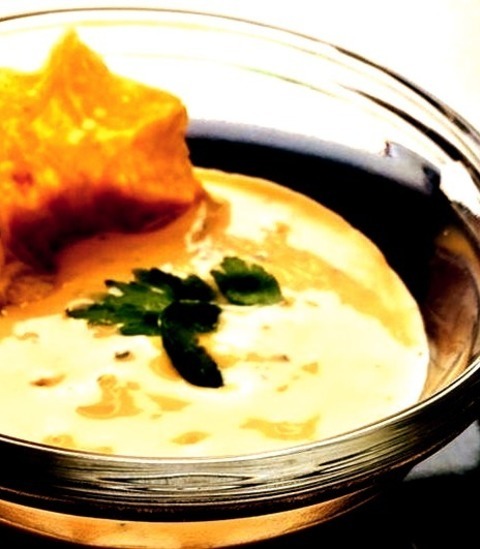
Torchy's Tacos Green Chile Queso Recipe You can easily make a sizable quantity of creamy, green chile queso using this ripoff recipe, enough for a party. 2 tablespoons vegetable oil, 2 cans hot green chiles, 1 can diced tomatoes and green chiles, 2 jalapenos seeded and minced, 1/2 teaspoon ground cumin, 2 cups water, 2 cans mild green chiles, 2 cans condensed cream of chicken soup, 1 package cream cheese cubed, 1 lime juiced, 4 cloves garlic minced, 1/3 cup minced yellow onion, 2 tablespoons hot sauce, 1 loaf processed cheese cubed, 1/2 teaspoon chili powder, 1 bunch fresh cilantro stems removed
2 notes
·
View notes
Text
Chicken and rice is a combination that spans cultures and cuisines, and has won hearts across the world. It's a comforting, flavorful, and often economical pairing which takes two commonly available ingredients and makes them greater than they would have been alone. In fact, chicken and rice are such an amazing duo that they're featured heavily in Starch Madness 2023, Serious Eats' yearly event which has 64 rice dishes competing to see which reigns (starchly) supreme.
Below, we've put together a list of our favorite chicken with rice recipes, suitable for cooking any time of year. Your dinner table has never looked better!
Halal Cart-Style Chicken and Rice With White Sauce Diana Chistruga The chicken is marinated with herbs, lemon, and spices; the rice golden; the sauce, as white and creamy as ever. Halal Cart-Style Chicken and Rice With White Sauce
Hainanese Chicken Rice Set Serious Eats / Fred Hardy This dish is a Singaporean staple made up of moist chicken, aromatic rice, and tender bok choy, finished with chile garlic sauce and kecap manis, a type of Indonesian sweetened soy sauce. Hainanese Chicken Rice Set
Dak Juk (Korean Chicken and Rice Porridge) Serious Eats / Vicky Wasik Warm, comforting, and deeply satisfying, this Korean rice porridge is perfect for when you're sick (and when you're not). Dak Juk (Korean Chicken and Rice Porridge)
Samgyetang (Korean Rice-Stuffed Chicken Soup) Vicky Wasik Instead of shreds of chicken and vegetables, this classic Korean chicken soup offers up whole small birds stuffed with sticky rice and aromatic goodies. Samgyetang (Korean Rice-Stuffed Chicken Soup) Continue to 5 of 16 below.https://c968be6d6f3b4812fbd25f78ea31ffac.safeframe.googlesyndication.com/safeframe/1-0-40/html/container.html
Galinhada Mineira (Brazilian Chicken and Rice From Minas Gerais) Serious Eats / Amanda Suarez This deeply comforting, one-pot meal consists of chicken and rice and is chock full of peas and carrots with plenty of garlic and onion. Galinhada Mineira (Brazilian Chicken and Rice From Minas Gerais)
Creole-Style Red Jambalaya With Chicken, Sausage, and Shrimp Vicky Wasik This New Orleans classic is loaded with meat, seafood, and tomatoes. Creole-Style Red Jambalaya With Chicken, Sausage, and Shrimp
Katsudon (Japanese Chicken or Pork Cutlet and Egg Rice Bowl) Serious Eats / Fred Hardy Katsudon is a Japanese comfort food classic that smothers fried cutlets with seasoned dashi and lightly cooked egg. Katsudon (Japanese Chicken or Pork Cutlet and Egg Rice Bowl)
Nicaraguan Arroz con Pollo Serious Eats / Qi Ai This deeply savory version of chicken and rice gets studded with smoked sausage, ham, olives, capers, carrots, and peas. Nicaraguan Arroz con Pollo Continue to 9 of 16 below.https://c968be6d6f3b4812fbd25f78ea31ffac.safeframe.googlesyndication.com/safeframe/1-0-40/html/container.html
Grilled Paella Mixta (Mixed Paella With Chicken and Seafood) Vicky Wasik This famed seafood-and-meat paella may not be traditional, but it's a favorite for good reason, as is our chicken and pork version. Grilled Paella Mixta (Mixed Paella With Chicken and Seafood)
Oyakodon (Japanese Chicken and Egg Rice Bowl) Serious Eats / Qi Ai Quick and simple, this popular restaurant dish is easy to make at home. Oyakodon (Japanese Chicken and Egg Rice Bowl)
Bengali Rice Porridge With Lentils and Chicken Vicky Wasik This chicken-potato-red lentil porridge is bright with turmeric and seasoned with ginger, a pungent hit of mustard oil, and a garnish of spicy green chutney. Bengali Rice Porridge With Lentils and Chicken
Hashweh (Palestinian Spiced Rice and Meat) Serious Eats / Mai Kakish Spices bloomed in ghee add complexity to this celebratory Palestinian dish. Hashweh (Palestinian Spiced Rice and Meat) Continue to 13 of 16 below.
Maqlubeh (Palestinian "Upside Down" Meat, Vegetables, and Rice) Serious Eats / Mai Kakish Maqlubeh features layers of meat, fried vegetables, and spiced rice flipped over to reveal a complete and festive meal. Maqlubeh (Palestinian "Upside Down" Meat, Vegetables, and Rice)
Classic Chicken and Rice Soup Tim Chin The beauty of this comforting classic is all in the details. Classic Chicken and Rice Soup
Arroz Caldo (Filipino Chicken and Rice Soup) Melissa Hom A hearty, congee-like chicken soup topped with eggs and crunchy fried garlic. Arroz Caldo (Filipino Chicken and Rice Soup)
Chicken Donburi (Japanese Rice Bowl) With Spinach Vicky Wasik This well-seasoned rice bowl is topped with crisp-skinned strips of chicken and sautéed spinach, along with shredded nori and fried garlic nubs which provide interesting texture and flavor. Chicken Donburi (Japanese Rice Bowl) With Spinach
#chicken#chicken and rice#recipes#easy dinners#chicken dinners#comfort food#16 Chicken With Rice Recipes for a Comforting Meal
3 notes
·
View notes
Text
Top Foodie Destinations Around the World
For cheap and best Travel Bookings - https://travelinternationals.com/
Food enthusiasts know that one of the best ways to experience a culture is through its cuisine. From bustling street markets to elegant fine dining, these top foodie destinations around the world offer flavors that will tantalize your taste buds and leave you craving more.
1. Tokyo, Japan Tokyo is a paradise for food lovers, boasting more Michelin-starred restaurants than any other city. From sushi at Tsukiji Market to ramen at hidden alleys, Tokyo offers an unforgettable gastronomic journey. Don’t miss out on unique experiences like Kaiseki dining or a bowl of freshly made soba noodles.
2. Paris, France Known as the culinary capital of the world, Paris is synonymous with fine dining and exquisite pastries. Savor buttery croissants, artisanal cheeses, and iconic dishes like coq au vin and boeuf bourguignon. For a sweet finish, indulge in macarons from Ladurée or Pierre Hermé.
3. Bangkok, Thailand Bangkok’s street food scene is legendary. From spicy Pad Thai to creamy green curry and mango sticky rice, every corner of this vibrant city offers something delicious. Don’t miss out on the famous floating markets where fresh, aromatic dishes are cooked right in front of you.
4. Mexico City, Mexico For authentic Mexican flavors, Mexico City is a dream come true. Tacos al pastor, tamales, and chiles en nogada are just a few of the mouthwatering dishes you’ll find. The city’s bustling markets, like Mercado de San Juan, are perfect for exploring traditional ingredients.
5. Istanbul, Turkey Istanbul’s unique location at the crossroads of Europe and Asia makes it a melting pot of flavors. Feast on kebabs, mezze platters, and baklava, or enjoy a cup of Turkish coffee. Don’t forget to explore the Grand Bazaar for a true culinary adventure.
6. Bologna, Italy Known as the food capital of Italy, Bologna offers rich and comforting dishes like tagliatelle al ragù (Bolognese sauce) and tortellini. Pair your meal with a glass of Lambrusco for an authentic Italian dining experience.
These destinations are a testament to how food can bring people together and provide a window into a region’s culture and history. Pack your bags and start planning your next culinary adventure today!
#foodiedestinations#travelandfood#culinarytravel#tokyofood#parisfoodie#bangkokstreetfood#mexicancuisine#turkishdelights#italianfood#travelbookings#foodtravelguide#wanderlust
1 note
·
View note
Text
Enchiladas are one of the most popular dishes in Mexican cuisine. The layers of rolled tortilla filled with a flavorful filling make it the perfect comfort food. But did you know that there are actually four types of enchiladas? Each type is associated with a distinct region of Mexico and offers a unique take on the classic dish.
The first type is enfrijoladas, hailing from southeastern Mexico. These enchiladas are made with a rich black bean sauce and topped with queso fresco and crema. The second type is the enmoladas, found primarily in the mountainous regions of central Mexico. These enchiladas use a rich mole sauce and are usually served with shredded chicken. The third type is enchiladas suizas, which are typically found in northern Mexico. These enchiladas use a creamy green sauce made with butter, cream, and tomatillos. Lastly, there are enchiladas rojas, a popular dish from the western region of Mexico. These enchiladas use a spicy red sauce made with dried chiles and tomatoes.
No matter which type of enchiladas you prefer, you’re sure to savor their delicious flavor. These flavorful and hearty dishes are beloved throughout Mexico and are an essential part of the country’s cuisine.
0 notes
Text

Spice, freshness, and bold flavors all in one stop! 🌶🍕 Start with our creamy Jalapeño Poppers, build your perfect salad from 15 fresh ingredients at the Salad Bar 🥗, and don’t miss out on the Chipotle Chicken Pizza—topped with white chipotle sauce, chicken, Canadian bacon, red onions, and tomatoes (garlic or Ortega green chiles upon request). 😋
0 notes
Text

This Loaded Green Chile Cheese Burger is a flavor-packed delight that combines juicy beef patties with the spicy kick of roasted green chiles, creamy cheddar cheese, and a zesty green chile mayo sauce. It's a perfect choice for a quick and satisfying meal.
Ingredients: 1 lb ground beef. 4 hamburger buns. 4 slices of cheddar cheese. 1 cup roasted green chiles, chopped. 1/2 cup mayonnaise. 1/4 cup diced red onion. 1/4 cup chopped fresh cilantro. 2 cloves garlic, minced. Salt and pepper to taste. Lettuce and tomato slices for garnish.
Instructions: Set your grill or griddle on the stove to medium-high heat to get it ready. Put the minced garlic and ground beef in a bowl and season with salt and pepper. Four burger patties should be made from the mixture. The burger patties should be cooked for about 4 to 5 minutes on each side on a hot grill or griddle. Change the cooking time to get the doneness you want. Before you start cooking the burgers, toast the buns on the grill until they are just barely brown. Put a slice of cheddar cheese on top of each patty right before they're done cooking and let it melt a bit. To make the green chile mayo sauce, put the chopped green chiles, mayonnaise, diced red onion, and chopped cilantro in a small bowl. Spread the green chile mayo sauce on the toasted buns before putting the burgers together. Put a tomato slice and a lettuce leaf on the bottom bun. Then add a burger patty with cheddar cheese on top. Put the top bun and more green chile mayo sauce on top of each burger. Warm up the Loaded Green Chile Cheeseburgers and serve them with your favorite sides. Have fun with your tasty and simple Loaded Green Chile Cheese Burger!
Kayla S
0 notes
Link
Green Chili Chicken Soup - Finding Zest This post may contain affiliate link... https://healthyfamz.com/green-chili-chicken-soup-finding-zest/?feed_id=712&_unique_id=66b174dee4fc9 #chickensoup #FamilyDiet #familydinner #FamilyFoods #Familyrecipe #greenchiles #greenchili #greenenchiladasauce #HealthyRecipes #MealPreparation #Nutrition #onepotmeal #rotisseriechicken #salsaverde #shreddedchicken #spicysoup
0 notes